The Tonkinese is a mix of the Siamese and Burmese cat breeds and has a loving, affectionate personality. Learn more about sharing your home with a pretty, playful Tonkinese.
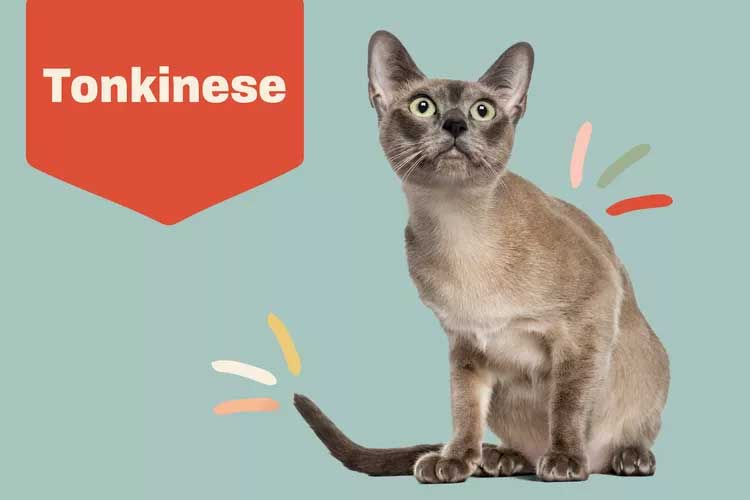
Tonkinese Overview
| OFFICIAL NAME | Tonkinese |
| COMMON NAME | Tonkinese |
| PET HEIGHT | 7 to 10 inches |
| PET WEIGHT | 6 to 12 pounds |
| LIFESPAN | 15 to 20 years |
| GOOD WITH | cats, children, dogs, families, seniors |
| TEMPERAMENT | affectionate, bold, sociable |
| INTELLIGENCE | high |
| SHEDDING AMOUNT | occasional |
| PLAYFULNESS | high |
| ENERGY LEVEL | active |
| VOCAL LEVEL | frequent |
| COAT LENGTH | short |
| COLORS | blue / gray, chocolate / brown / sable, cream / beige / tan |
| PATTERNS | color point |
| OTHER TRAITS | easy to groom, easy to train, friendly toward humans, friendly toward other pets, good lap cat, strong loyalty tendencies, tolerates being picked up |
The Tonkinese is a mix of the Siamese and Burmese cat breeds and shares many qualities with those parents. This striking feline has a charming appearance, with a pointed coat and bright, jewel-tone eyes.
Attentive Tonks were born to be a companion breed. These kitties love to play with people and curl up in a warm lap at the end of the day. They have a lot of affection to give their pet parents and make a wonderful, loving addition to many homes and families.
A purebred Tonkinese is relatively uncommon, and typically costs $600–$1,200 from a reputable breeder.
Appearance
The Tonkinese is an eye-catching breed known for their mysterious, glamorous appearance. A pointed coat, svelte limbs, and bright eyes all lend to the Tonk's alluring air.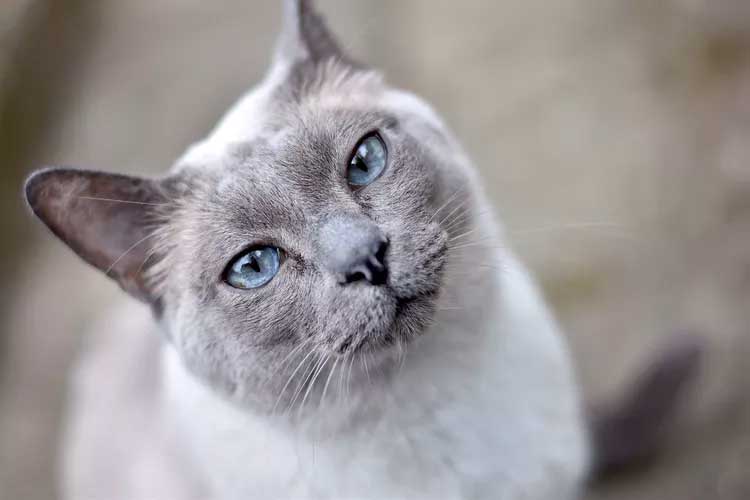
Tonkinese is a medium-sized breed with muscular, surprisingly heavy bodies. This breed usually weighs somewhere in the 6–12-pound range. They have medium-sized ears, almond-shaped eyes, and slim legs and feet. Their coats are made up of short, fine, silky smooth hair and are low-shedding. But even though their fur doesn't fly, the Tonkinese isn't considered a hypoallergenic cat—and there's really no such thing as a hypoallergenic pet, anyway.
According to the Tonkinese Breed Association, Tonkinese coats come in four color categories: platinum, champagne, natural, and blue. Their coats are further divided into three categories of patterns, which are a high-contrast point pattern, medium-contrast or "mink" pattern, and low-contrast or solid pattern. A Tonk's eye color is related to coat color and pattern. Mink Tonkinese have aqua-hued eyes, point Tonkinese typically have blue eyes, and solid Tonkinese cats have green eyes.
Temperament
Tonks have a personality fit for companionship. Cold and aloof? Not these cats! These sweet kitties love their role as lap cat and always have affection to share with their family. The Tonkinese shares his curiosity and intelligence with his Siamese side and affectionate energy with his Burmese ancestors.
"They certainly are outgoing and they certainly are people cats," says Marilyn Krieger, certified cat behavior consultant in San Francisco. "They're such people cats, and they shouldn't be left alone without company for hours and hours on end."
Tonks are playful, smart, and social pets who enjoy spending time with their pet parents and supervising day-to-day life. This breed is incredibly talkative, and they expect you to listen—and respond! Some might call this take-charge breed a little bit bossy, but your Tonk's heart is usually in the right place.
These fantastic felines are intelligent and inventive. The Tonkinese is like his Siamese ancestors in his desire to master interactive toys and try new tricks. Tonks are active, silly cats with a reputation for jumping high and clowning around to entertain their family.
Living Needs
To put it simply: Your Tonkinese needs tons of attention. If you're up for a constant companion who will follow you from room to room, cuddle up on your shoulder, and join your everyday activities, the Tonk is for you. Since these sweeties need so much time and affection, they hate to be left alone during the day. In fact, Krieger recommends getting a pair of Tonkinese so they always have a companion to turn to.The Tonkinese is a super smart and social breed that craves interaction. They're more than happy to be the welcome wagon for any guest who drops by, and they truly immerse themselves as a part of a family. A Tonkinese can live well in any space but, because these are chatty kitties, you might want to think twice before bringing home a Tonks to an apartment with shared walls.
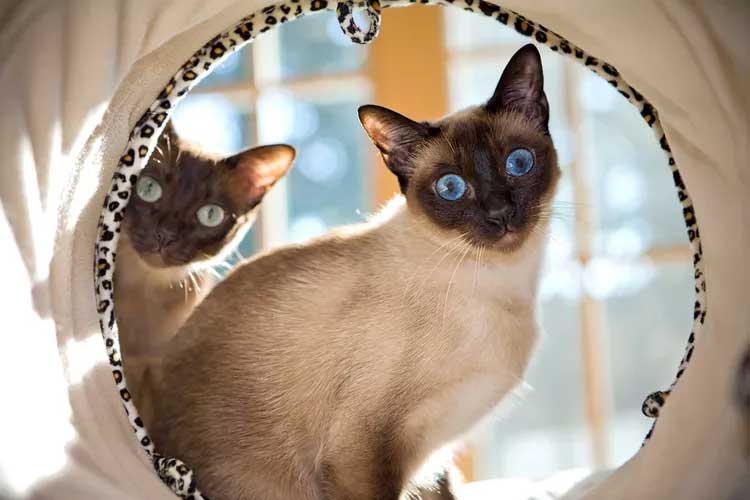
But watch out—when they get bored, these cats can be mischievous. To help keep your kitty busy and out of trouble, be sure to provide him with scratching posts and a variety of cat toys. Krieger says the active Tonkinese loves to jump and climb, so he needs tall cat trees to scale, cat shelves to jump onto, and a window hammock where he can snooze and chatter at birds.
"They're highly active, highly intelligent cats," Krieger says. "They're not going to just sit around and just be a little couch potato all day. They need stuff to do; they need to have interactions with people."
Tonkinese generally get along well with children, other cats, and cat-friendly dogs. Introduce them to people and pets early to help them feel comfortable in social situations.
Care
"[Tonkinese cats are] known to be very keen on grooming themselves and require little attention in that department from their owners," says Kurt Venator, DVM, PhD, and chief veterinary officer at Purina.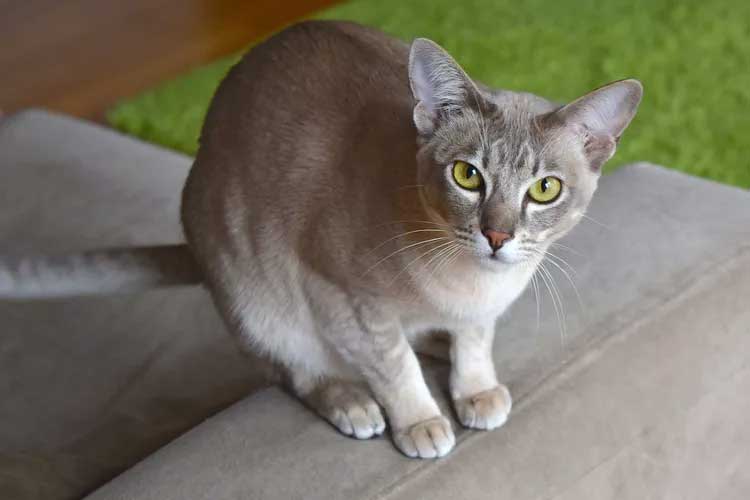
These cute cats require only weekly brushing to keep their coats smooth and shiny, and the rare bath if they've gotten themselves particularly messy. You'll also need to trim their nails, clean their ears regularly, and keep their litter box tidy.
These intelligent, athletic cats love to be stimulated mentally and physically. Interactive toys, cat trees, and other opportunities to leap and play are a great way for your Tonk to get exercise.
"You want to make sure they have plenty of enrichment," Krieger says. "They like games. You can roll treats for them to chase; if you have high places [like cat trees] you can hide treats and food up in these places for them so they can run around to get it."

Krieger says clicker training your Tonkinese should be fairly easy. This breed is incredibly intelligent and loves to learn but can be a bit independent-minded. Treats and praise can help motivate your Tonk to learn.
Tonks should be fed a diet of high-quality cat food recommended by your vet. This breed can become overweight, so it's important to make sure you don't overfeed them.
Health
The Tonkinese is a typically healthy breed with an expected lifespan of 15–20 years. Some common health concerns for Tonkinese include gum disease, bowel issues, and respiratory infections."Tonkinese may be genetically prone to a heart disease termed hypertrophic cardiomyopathy," Venator says.
Responsible breeders will test kittens for health issues, but it's important to keep regularly scheduled vet appointments and take the advice of your cat's vet. Diseases and other health problems can develop later in life and should be routinely monitored.
History
What we know today as the Tonkinese was first referred to as a "Chocolate Siamese" at a cat show in 1880s Britain, referring to the breed's dark brown chocolate point coat and resemblance to the Siamese. The breed's popularity didn't take off in the UK, and after a short while the cats ceased to exist in Britain.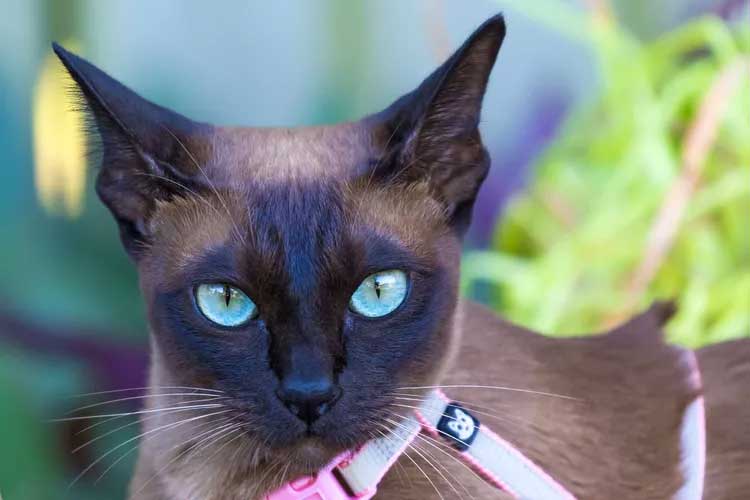
However, the cats kept turning up in Thailand and the area formerly known as Burma (now Myanmar)—likely as a result of natural matings between Siamese and Burmese cats. One of these naturally bred cats was imported to the United States in the 1930s. The cat's name was Wong Mau, and she became the mother of the modern Burmese and Tonkinese breeds. In the 1950s, the first human-initiated mating between the Siamese and Burmese was done by a breeder named Milan Greer.
Though Greer discontinued his breeding program, other breeders became interested in crossing the Burmese and Siamese, most notably Jane Barletta from New Jersey and Margaret Conroy in Ontario. These breeders produced what is today called the Tonkinese, named after the Tonkin region in northern Vietnam.
Fun Facts
The largest litter of kittens ever born was to a Tonkinese cat. The mama Tonk had a litter of 19 babies—the average house cat has around five babies per litter.Temperature can affect the color of your Tonk's coat. Tonkinese has an enzyme in his fur that causes his coats to darken in cold temperatures.